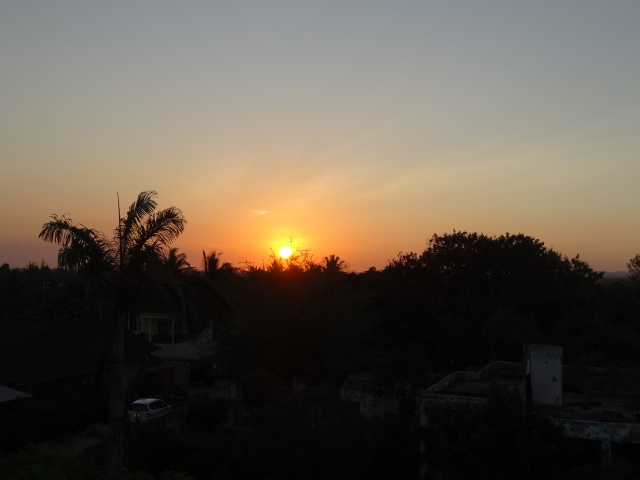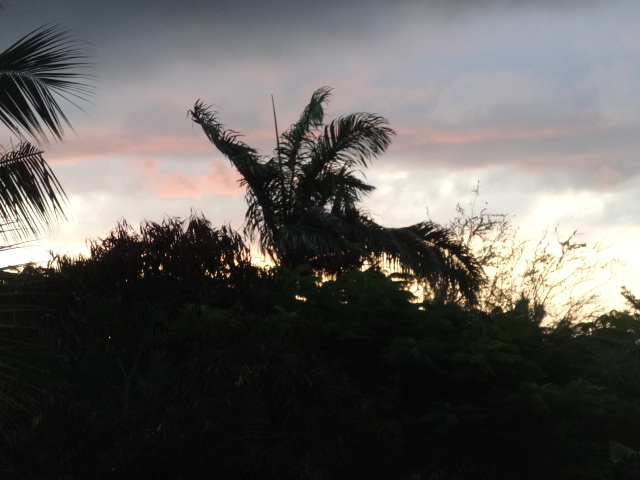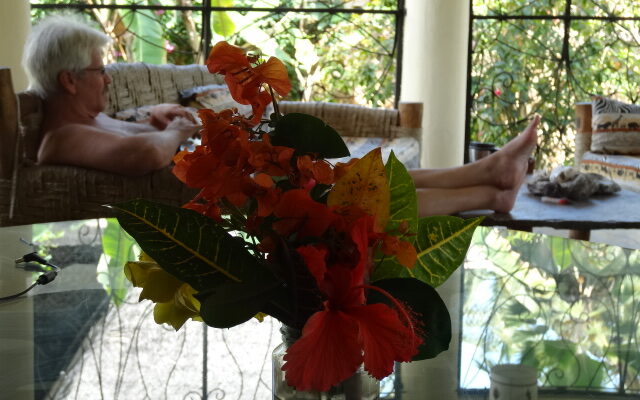 |
| The Treasury in Petra, Jordan! This site made us gasp with our hearts pounding wildly, less from the long walk in excessive heat and more from sheer joy! Please click here for more. |
Years Long World Travel Writer:
All of my life, I have loved writing. As a student, I used the written word to bypass a certain degree of studying by writing flowery essays and compositions in place of countless mundane and boring assignments. Writing as a profession was not only my dream, whether to write a book to be published someday, hoping to attain a level of success or, to explore vast experiences throughout the world, providing me with ample fodder to inspire the words that so freely flew off my fingers on an old fashioned typewriter.
As we all know so well, life gets in the way of many of our dreams, and we find ourselves entrenched in the responsibilities of daily life; working, parenting, and financial obligations. My biggest dream was to travel to the African continent, taking endless numbers of photos of wildlife, culture, and nature and seeing the other six continents, the rest of the world. Many years passed before the possibility of writing as a profession would present itself.
 |
| The walled city of Dubrovnik, Croatia. Please click here for more. |
The segue from a dream to reality…
In the 1980s, for the first time in my life, I had an opportunity to travel to several countries, each leaving me longing to sit down and put pen to paper about my experiences. But, here again, the demands of my life as a business owner and parent left me little time to write about my world travel experiences.
Serendipitously, in 1991, while at a business-type social event, I stumbled across a wealthy gentleman who asked me if I knew a writer who may be interested in an unusual project. He’d written two dozen songs and had a burning desire to incorporate them into a play eventually produced at a local playhouse. I couldn’t resist saying, “I am a writer, and I’d be up for the challenge.”
A few days later, I met with him at his office, bringing along the favorite pieces I’d written over the years; essays, poetry, the start of a book, and business-related journals. He hired me on the spot. Within days, he presented me with a years-long contract specifying I could take more than one year to write the play using the accompanying music scores he’d written. I’d receive a bonus if it were completed in one year.
 |
| The Miraflores Locks in the Panama Canal, as we entered. Please click here for more. |
Traveling to learn to write a play…
Part of my contract provided me with an extraordinary benefit. He’d pay all costs incurred to travel to New York for private training sessions with a world-renowned playwright and professor at Northwestern University. I had no clue how to write a play, although I felt confident I could learn the art. I was on my way to New York City in no time at all, book into a fabulous historic hotel with every amenity.
An added perk while in New York was to go to as many Broadway plays as I could attend, making notes on verbiage, nuances, and unique writing styles, adding to my repertoire of experience and the use of language in a significant production. I traveled to New York three times to meet with my “teacher” and watched a Broadway show each evening. I wished Tom had been with me to revel in this unique opportunity. Somehow, on my own, I grasped every morsel of knowledge I could glean along the way.
A reality of this writing assignment was that I was a “ghost” writer, and I would never get “credit” for the comprehensive and cohesive story I’d written to work cohesively with the wide array of songs that had nothing to do with one another. Somehow, the magic happened, and the year-long task came to fruition.
 |
| Looking up at the sky, day and night, is a rare treat, from inside the riad we rented in Marrakech, Morocco, defined as a traditional Moroccan house with an interior garden or courtyard. It rained inside the house while we stayed in the rooms surrounding the central square. For more, please click here. |
Years Long World Travel Writing:
This was almost 30 years ago. During this period, when I found myself writing each day, on occasion, my mind would wander to the prospect of worldwide travel writing, wondering if that dream would ever materialize. When the play was finally produced in the theatre district in Minneapolis, Tom and I attended opening night to discover delightfully. He had included my name in the program as a “consultant.” I was content.
Where did I go from there?
After the lucrative year-long assignment, I was at a loss as to what to do with my career from there. Writing as a career wasn’t a field whereby one could easily earn a living. So, I opted to return to the business world, where I languished for the next 20 years, to finally retire in 2010, hoping I’d have sufficient fodder to begin to fulfill my lifelong dream of writing about world travels. But, how would that transpire?
Tom and I married in 1995 and lived an entire life in Minnesota, USA. He couldn’t retire until 2012. Like many Minnesotans, they often retire to warmer climates such as Arizona, Florida, or Texas than spend the bitter winter months in the Upper Midwest. This type of life, owning two homes, didn’t appeal to either of us.
 |
| On a Thursday morning in Marloth Park in 2013, as I stepped outside onto the veranda, camera in hand, this was the first thing I saw. Quietly alerting Tom, who was still inside the house, he rushed out to witness this same sight. And then, in minutes, they were everywhere, a dozen total. No words can describe our joy. For more, click here. |
One day, on a whim, ten months before Tom’s retirement date of October 31, 2012, I asked him, “Honey, what would you like to do when you retire?”
Flippantly, waving a hand in the air, he replied, “Let’s travel the world!” Finally, I’d have an opportunity to a lifestyle of years-long world travel writing.
I was shocked, never thinking for a moment he’d leave everyone and everything he’d known and loved for all of his life, to begin a life of world travel.
World travel, my dream, my fodder!
My first thought, after shaking my head in incredible wonder was, “At last, I could fulfill my dream of becoming a world travel writer.” The fact I was already 62 years old at the time was irrelevant.” A lifelong dream was coming to fruition. Instead of trying to write a book about the simple life of a 62-year-old grandmother living on a lake in Minnesota, I could ride on a safari vehicle, surrounded by lions and elephants in the savannah of Africa.
Over the next ten months, every waking moment was spent in the planning stages and the painstaking process of selling everything we owned; house, cars, household goods, while leaving treasured items for our children and six grandchildren. No, the decision to leave our family, friends, and everything we owned didn’t come easily.
But, once we decided, we were committed to seeing the world and, along the way, for me to write a very long, seeming never-ending story of our worldwide travels, day after day, month after month, and year after year. The idea of being able to exact a year’s long world travel writing philosophy sent our hearts and minds into a frenzy of incredible joy, which neither of us had ever known before.
 |
| Alas, we arrived at the magical splendor of Victoria Falls, one of the Seven Wonders of the World. Please click here for more photos. |
The detailed process…
The concept of eliminating every item one has accumulated over a lifetime, resulting in no storage facility that would leave us with an eventual “out,” was earth-shattering. We didn’t want to be in a position whereby we wouldn’t “tough it out” if things became difficult. If we stored our belongings, it would be too easy to return to our old lives, taking our “stuff” out of storage, buying a new house, and setting up housekeeping again. No, we wanted this to be a serious commitment. The world is a huge place and, it was conceivable we could continue to travel for years to come.
Somehow, we managed to unload all of our personal belongings and physical possessions. We discovered a newly found sense of freedom in the process, one we’d need to carry with us in our worldwide travels and remains with us today.
Fulfillment of a dream… The writing began…
Less than two months after we’d decided to travel the world, I uploaded our first post on March 15, 2012, while naming our site, WorldWideWaftage.com. We found the word “waftage” in an old English dictionary, which means to “travel gently by air, sea or land.” That was our plan, to travel the world gently, leaving a small footprint behind us, one of kindness, consideration, acceptance, respect, with profound reverence for the world surrounding us, it is wildlife and its people. That philosophy has served us well eight years later as we’ve enjoyed years-long world travel writing.
 |
| As we approached Highclare Castle, home of the famed BBC TV series Downton Abbey, we held our breath. No interior photos were allowed. Please click here for more photos. |
That first post, found here, was finally my chance to write while stepping outside the box of my otherwise uncomplicated life into a world I never dreamed possible. Sure, it was a little late in coming. Still, we were committed to writing about our experiences in traveling the world, with no home to return to, no physical possessions other than that we carried with us, and no easy means of “calling it quits.”
Once that first post was uploaded when miraculously, readers from all over the world found us, I was hooked, as was Tom. Although he doesn’t write the words in the posts, he is my right hand, constantly researching to ensure we provide concise and accurate information at every turn. Our diligence in sharing “the truth” and not embellishing our experiences have been vital in our writings and images. We tell it “like it is,” rather than some fluffed up the notion of what traveling the world is really like. How exciting it was for a years-long world travel writing adventure.
In the process over these eight years, we’ve had no haters. Instead, we’ve been blessed with readers who appreciate the opportunity to share in our now daily stories. To date, we’ve written almost 3,000 posts, rarely missing a day since we began posting daily over seven years ago.
 |
| While Tom had an opportunity to be a shepherd in Witheridge, Cornwall, the sheep turned and made a wrong turn (herd mentality), and again, Tom guided them back in the right direction. Please click here for more photos. |
What about writer’s block?
“Writer’s block” doesn’t exist in our world, even after the past over six months we’ve spent living in an average-sized hotel room in Mumbai, India, whereby we had to cut short a prepaid 55-day private tour of India when COVID-19 hit, and the lockdown began. At the onset of the lockdown, I was worried we’d run out of topics and stories to tell. But, with a commitment to years-long world travel writing, we knew we’d carry on.
Fortunately, our previous almost 3,000 posts provided us with exciting photos from the past eight years of world travel. Each day, we’ve shared some of our new thoughts and experiences while in lockdown while adding photos from past posts to fulfill our reader’s objectives of staying in touch with us as they, too, remain in lockdown all over the world.
As for the writing of the past posts, I can honestly say there was never a day in our ongoing eight long years of world travel where we couldn’t come up with a story to tell, a series of photos to share, or a message from our hearts. We’ve weathered unbelievably stressful and worrisome events to some of the greatest joys of our lives, never failing for a moment to appreciate these gifts we’ve been given of traveling the world for years, not weeks, not months.
 |
| The Assemblee Nationale, the French National Assembly. Pairs, at night on a dinner cruise on the River Seine. Please click here for more photos. |
What does the future hold? Will we have more world travel stories to write?
These challenging times of a worldwide pandemic, impacting every man, woman, and child wherever they may be on this vast planet, will eventually waft away. We can only hope and pray that we’ll have enough desire and commitment to manage our way through the upcoming obstacles presented from this disaster by continuing in our worldwide travels, writing new stories every day, sharing tender, earth-shattering, profound, and jaw-dropping experiences as we continue to strive to fulfill the final stages of our journey.
In conclusion…
We’ve traveled to seven continents. We’ve walked the rough terrain in the islands of Antarctica, witnessed millions of penguins. We walked the long and arduous journey to the unearthed city of Petra in Jordan in 110F, 43C, temperatures. We’ve sailed on 27 cruises throughout the world.
 |
| In Antarctica, both of us held the “I crossed the Polar Circle” sign. Please click here for more photos. |
We’ve transited the Panama Canal twice. We’ve walked in the walled city of Dubrovnik, Croatia. We’ve dined on a luxury watercraft on the River Seine in Paris. We’ve lived on working farms in the countryside in Cornwall, England. We’ve lived in the bush in South Africa with wild animals wandering about our holiday house, day and night. We’ve felt the spray from Victoria Falls in our faces in both Zimbabwe and Zambia in Africa. We lived in a riad in the Souks of The Big Square in Marrakesh, Morocco. We visit the famous castle from Downton Abbey, Highclere Castle, in England. Our years-long world travel writing was inspired by these outstanding opportunities.
 |
| We never imagined we would see the Taj Mahal. And yet, in February 2020, on a hazy morning, it lay before our eyes in its entire splendor. Please click here for more photos. |
And, most recently, we’ve traveled India on the world-renowned Maharajas Express luxury train, eventually ending up in Mumbai in a six-month-long lockdown in a hotel near the airport, hoping someday to be able to carry on.
Through it all, we’ve continued to write our thoughts, feelings, dreams, and sorrows as we’ve embarked upon a years-long world travel writing journey to see the world and its treasures, many of which are yet to behold.
Photo from one year ago today, September 20, 2019:
 |
| From this site: “The pillory is a device made of a wooden or metal framework erected on a post, with holes for securing the head and hands, formerly used for punishment by public humiliation and often further physical abuse.” Tom wasn’t comfortable in this position for long during a visit to the Bodmin Moors in Cornwall, England. Please click here for more photos. |


























































































